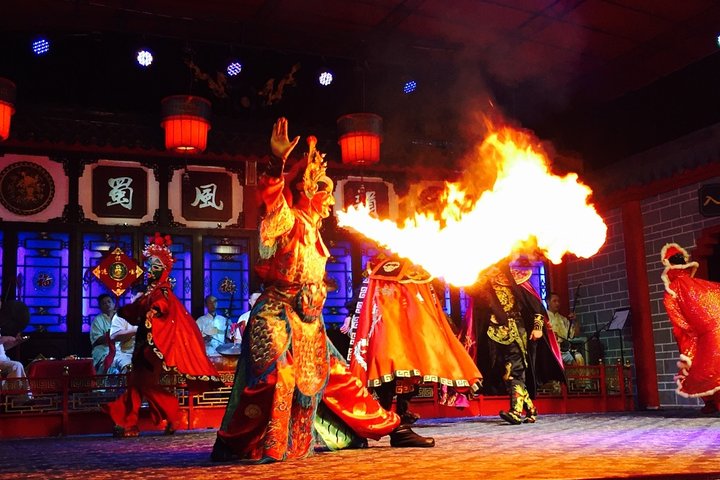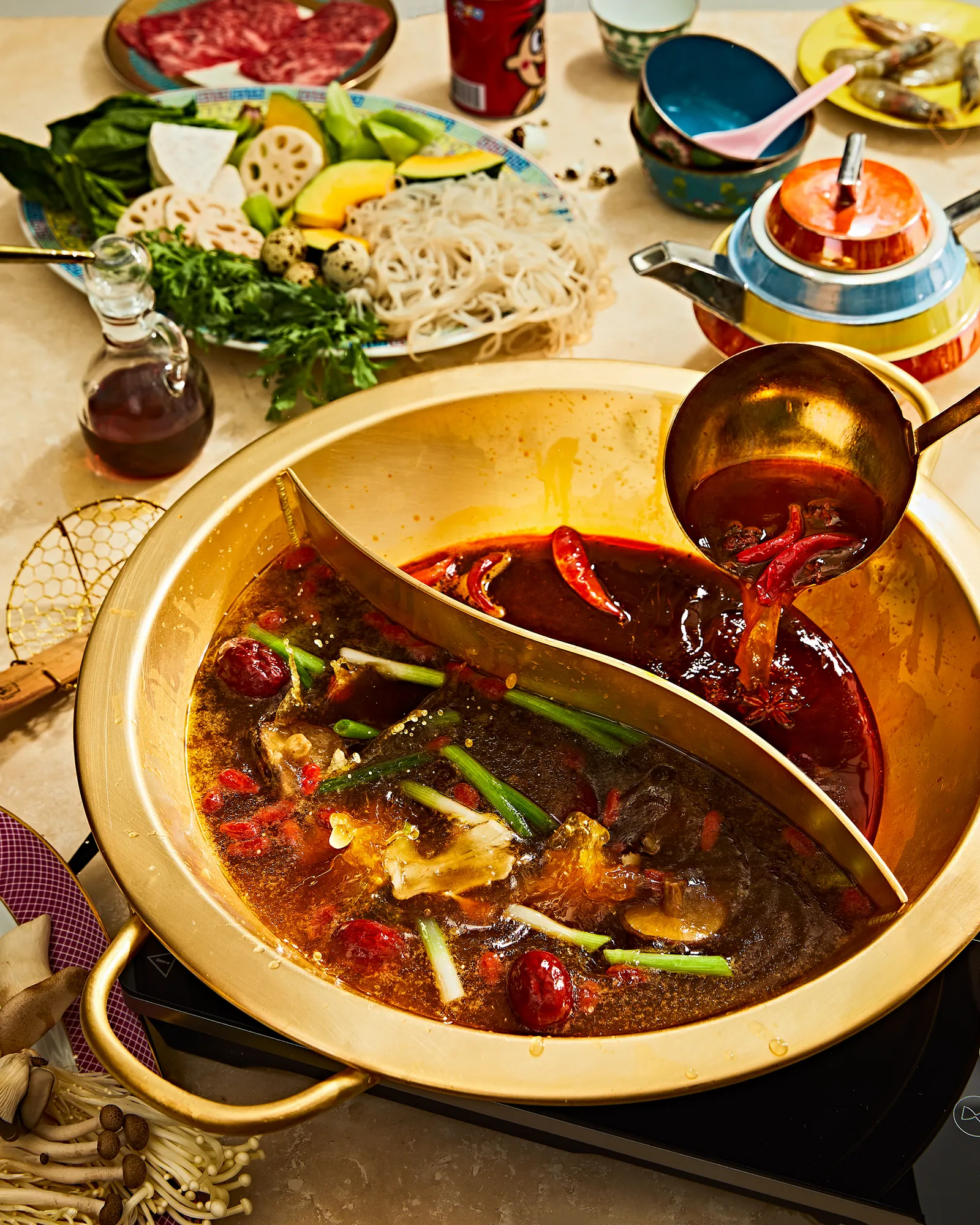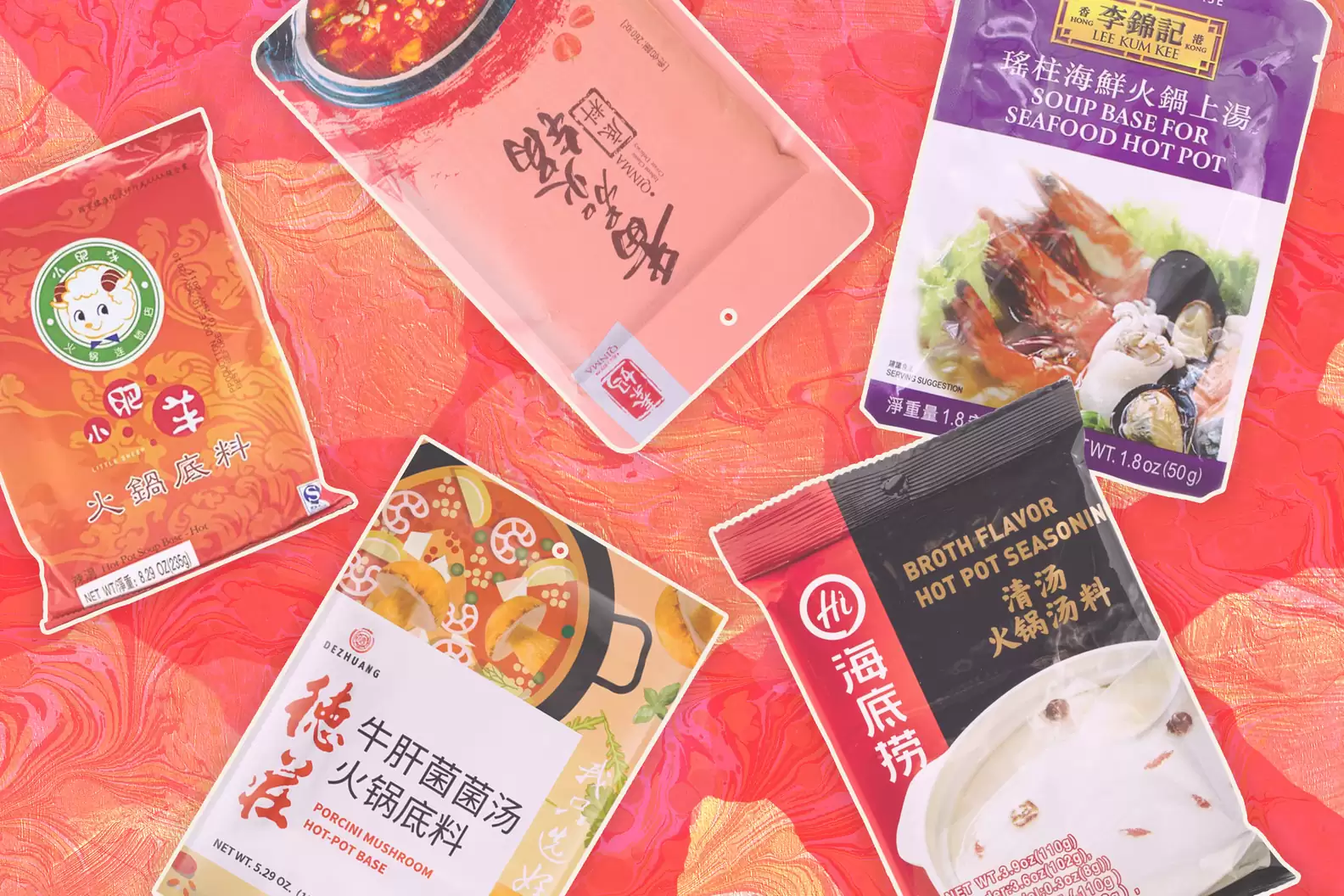Mala Culture
Discover the story behind Mala cuisine
Spicy culture is at the heart of every delicious bite, brimming with history and heritage. Each dish reveals unique flavors and the passion behind spicy cuisine! Join us in celebrating its vibrant charm!

Destination
A Popular Destination for Mala Culture
Preparing in advance is the cornerstone of success and can increase efficiency and a sense of accomplishment.
Sichuan
Sichuan and Chongqing are the birthplace of Mala hotpot, famous for their bold, Mala broths infused with Sichuan peppercorns and chili peppers.
Chongqing
Chongqing hotpot is known for its fiery, oily broth and a focus on intense spice and numbness, reflecting the city's bold culinary culture.
Beijing
Beijing has adopted Mala hotpot, blending traditional flavors with a growing appetite for spicy, customizable broths.
Shanghai
Shanghai blends mala hotpot, mala tang, and mala xiang guo with local ingredients, offering a unique twist on traditional Sichuan flavors.
Guangzhou
Guangzhou combines mala hotpot with Cantonese influences, balancing spice with fresh ingredients for a lighter take on Sichuan cuisine.
Vancouver
Vancouver fuses mala hotpot and mala tang, mixing Asian and Canadian flavors with bold, spicy broths.
Los Angeles
In Los Angeles, Mala hotpot thrives in the diverse food scene, offering spicy broths in a fusion of Asian and local influences.
New York
New York embraces mala hotpot and mala tang, with customizable broths and a mix of Sichuan and global influences.
Taipei
Taipei combines mala hotpot with local Taiwanese ingredients, creating a fusion of bold, Mala flavors loved by locals.
Singapore
Singapore embraces Mala hotpot as part of its multicultural food scene, pairing spicy Sichuan flavors with communal dining.
Sydney
Sydney integrates mala hotpot and mala xiang guo, adding Australian ingredients for a multicultural, spicy experience.
London
London adopts mala hotpot and mala xiang guo, combining Sichuan cuisine with British ingredients for a creative, flavorful fusion.
Explore our articles on Mala culture
Discover the stories behind Mala culture from different perspectives.

Explore the culinary delights of Vancouver, where you can savor flavors from around the globe! From American cuisine to exquisite European dishes, authentic Chinese food to affordable and delicious Korean and Japanese street fare, this city never disappoints food lovers!

This summary describes a trip to Chengdu from August 24 to 30, highlighting visits to cultural sites like the Sanxingdui Museum and various local temples. The traveler reflects on the summer heat, the experience of tasting spicy Sichuan cuisine, and enjoying local attractions like Sichuan opera. The narrative conveys the city’s unique blend of vibrancy and tranquility, emphasizing a slower pace of life.

The Chengdu Plain is called "Western Sichuan Bazi" in Sichuan dialect. Because the local water system is developed, it nourishes the local food culture. The famous Dujiangyan irrigation project created local people's dependence on water, which also shaped the characteristics of Chengdu hot pot.

Your first meal upon arriving in Changsha should definitely be at this local gem—a budget-friendly seafood spot hidden away next to Yangfan Night Market! It has been around for years and is always bustling during meal times, creating a wonderfully down-to-earth atmosphere.

Modern hot pots emerged during the Daoguang period of the Qing Dynasty (1821-1851). Their precise birthplace is disputed, with Leshan, Luzhou, and Chongqing all claiming to be the origin of this popular cuisine. Each offers its unique styles and traditions.

This article lists the top ten must-eat time-honored restaurants in Chengdu, each showcasing authentic Sichuan cuisine. Highlights include Luo Er Hotpot, known for its spicy flavors, and Jinli Tofu Pudding, famous for its delicate desserts. With average prices and tips for dining, the piece emphasizes Chengdu’s rich food culture and its blend of tradition and modernity.

Of course, traveling is inseparable from food. Singapore's food is all-encompassing, combining the East and the West, and you can find flavors from all over the world here. When you search for Singapore food in a certain book, you will find all kinds of recommendations for exploring restaurants, and a variety of real and fake guides that make you dizzy~
The soup base is key
Prep thoroughly
Prepare basic oil, chili, pepper, bean paste, garlic, ginger, star anise, rice wine, soy sauce, sugar, salt, chicken essence, sesame oil, and broth in advance.
Balance dried chilies and peppercorns
Sichuan pepper provides numbing, while chili adds heat. Finding the right balance is crucial to ensure Sichuan pepper enhances mouthfeel without overshadowing the chili’s spice.
Maintain pot temperature
When frying, keep a close eye on the heat. Only add ingredients when the oil is hot enough to prevent burning.
Enhance seasoning aroma
Cook the ingredients in batches, stirring until their aromas are fully released. Don’t hesitate to marinate occasionally for deeper flavor.
Tips for choosing hotpot soup base
Balance of spicy and numbing taste
The spicy hot pot base derives its heat from chili peppers and numbing flavor from peppercorns and spices. Choose a base that suits your taste preferences.
Fresh and fragrant taste
A quality spicy hot pot base offers rich aroma and flavor from spices like bean paste, peppercorns, dried chilies, and star anise, not heat.
Ingredients and solubility of the base
Choose a base with natural ingredients, avoiding additives. A good base dissolves quickly for a uniform soup.
Common brands
Brands like Haidilao, Little Sheep, De Zhuang, and Liupo are available on Weee! and YamiBuy. In Phoenix, visit 99 Ranch Market or H Mart for a good selection.
FAQs
Mala Culture FAQs
Delve into the following questions to learn how to make delicious homemade spicy food and, even more, to build confidence for your first attempt.
What exactly is the difference between "mala" and just "spicy" food?
"Mala" refers to two key elements—"málì" (麻), the numbing sensation from Sichuan peppercorns, and "là" (辣), the spiciness from chili peppers. Unlike regular spicy food, "mala" creates a complex sensory experience where your mouth feels both numbed and heated at the same time. It’s not just heat—it’s a unique, tingling sensation that lingers long after you’ve eaten.
Why do people seem to love the numbing sensation of Sichuan peppercorns? Doesn't it feel weird?
The numbing effect from Sichuan peppercorns is a totally different sensation. While it might feel strange at first, many people come to enjoy it because it adds depth and complexity to the flavor. It's like a little buzz in your mouth that enhances the experience, helping balance out the intense spiciness. It’s all about the "flavor" and the "feeling" it creates—it's almost like a sensory adventure!
Is Mala food just about heat, or does it have deeper cultural meanings?
Mala food isn’t just about heat—it’s deeply tied to Chinese culture, especially from Sichuan. The combination of spicy and numbing flavors is meant to engage the senses and elevate the entire dining experience. It’s about balance—balancing the heat of the chili with the coolness of the peppercorn’s numbing effect. Eating mala is often a communal experience, symbolizing unity and social bonding, where sharing food strengthens relationships. It’s almost a metaphor for life's highs and lows!
Why do so many people in China love to eat Mala hot pot in groups?
Mala hot pot is more than just a meal; it's a social activity. The experience of cooking raw ingredients together in a bubbling, spicy broth fosters a sense of togetherness and community. It’s not just about eating—it's about sharing, bonding, and talking over a hot, spicy, numbing meal. The communal nature of hot pot makes it a perfect choice for gatherings, family dinners, or even business meetings in China. The shared experience makes it special.
If I try Mala food in the U.S., will it be the same as in China?
While you can find good mala food in the U.S., it might not have the same level of authenticity as what you'd get in Sichuan or other parts of China. The spices and Sichuan peppercorns can be harder to find, and some American adaptations might tone down the heat or numbing sensation to cater to local tastes. But still, if you seek out a true Sichuan restaurant in a major city, you’ll get a pretty close experience to what locals would have in Chengdu!
Does eating Mala food have any health benefits, or is it just about the flavor?
Mala food isn’t just about taste; it also carries some cultural beliefs about health. In Chinese traditional medicine, Sichuan peppercorns are thought to help with digestion and balance body heat, while chili peppers are said to promote circulation and warmth. Of course, the heat can also give your metabolism a little boost! However, it’s not considered “health food”—it's more about the sensory experience and how it makes you feel.
Can Mala food be addictive, like some people say?
Absolutely! Mala food has an addictive quality, especially because of the combination of spiciness and the numbing sensation. People often crave that tingling feeling from the peppercorns, as it’s a unique sensory experience that’s hard to replicate with other cuisines. The more you eat it, the more your body becomes accustomed to the heat and the numbing, leading to cravings for that intense flavor combination. It’s definitely one of those “love it or hate it” experiences!
What’s the deal with the "hotter, the better" mentality in Mala culture?
In many parts of China, especially Sichuan, the idea of eating something intensely spicy is often a sign of strength or endurance. There's a kind of cultural pride around being able to handle extremely hot and spicy food, and it’s not just about the taste—it's about challenging yourself and proving your "toughness." It’s also about enjoying the discomfort—struggling through the heat and spice becomes a shared, bonding experience with others at the table.
How do I eat Mala food without feeling overwhelmed by the spice?
If you're new to mala, it’s best to start slow. Go for dishes that have a milder level of spice and ask for less chili or Sichuan pepper if you can. If it gets too hot, drink some tea or eat something creamy like yogurt to help cool your mouth down. In China, people often balance spicy dishes with something less spicy to keep their palate refreshed and prevent overload. And remember: don’t be afraid to ask for a break!
Can I try Mala food if I’m not used to spicy food?
If you're not used to spicy food, you might want to start with a milder spice level. Some restaurants offer "mild" or "medium" options, but be cautious—the numbness from Sichuan peppercorns is also a unique sensation that might take some getting used to.
Why is Mala food often so messy? Is that part of the experience?
Yes, definitely! Mala food, especially in the form of hot pot, can get pretty messy. Part of the appeal is the hands-on, interactive nature of the meal. You're dipping raw ingredients into a bubbling, spicy broth, and the cooking process is often a shared activity. People are encouraged to get their hands dirty, slurp their noodles, and generally enjoy the chaos. It’s a more informal, fun dining experience—embracing the mess is part of the enjoyment!
Can you eat Mala food every day, or is it something for special occasions?
While Mala food is enjoyed regularly in places like Sichuan, it’s generally seen as a flavorful but intense option, often reserved for when you’re in the mood for something special or exciting. That said, many people in China eat it frequently, especially during colder months when the heat from the peppers is comforting. But because it’s so intense, it might not be something you'd want to eat every day—it’s more of a “treat” kind of meal!
Are there vegetarian options for Mala Hotpot or Malatang?
Yes! Mala hotpot and malatang can be fully vegetarian. You can choose from a wide range of vegetables, tofu, mushrooms, and vegetarian proteins like soy-based meat substitutes.
How spicy is too spicy?
For those unfamiliar with the spice, it’s recommended to start with a mild or medium option. Chinese mala dishes can get extremely hot, so take it slow and adjust based on your spice tolerance.
Is it okay to eat Mala food with friends or family?
Absolutely! Mala hotpot and malatang are often enjoyed in a communal setting, where everyone shares ingredients and enjoys the meal together. It’s a fun, social dining experience, perfect for gatherings with friends and family.
Can I get Mala food in the U.S.?
Yes, Mala cuisine has become quite popular in the U.S., especially in cities with large Chinese communities like New York, San Francisco, Los Angeles, and Chicago. Many Asian supermarkets sell Mala Hot Pot ingredients, and there are also specialized Mala restaurants where you can enjoy these dishes.

